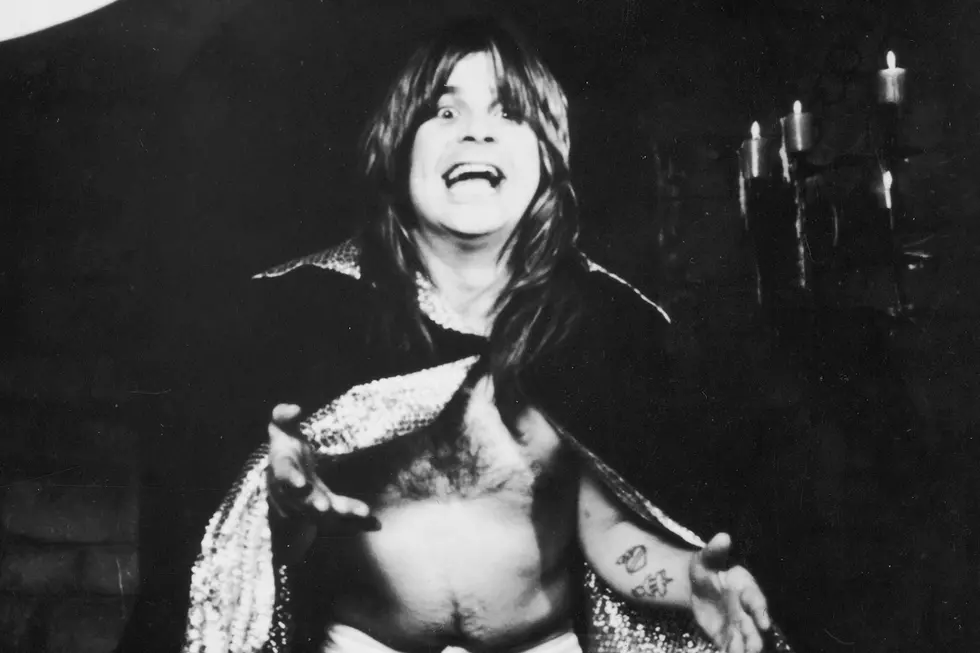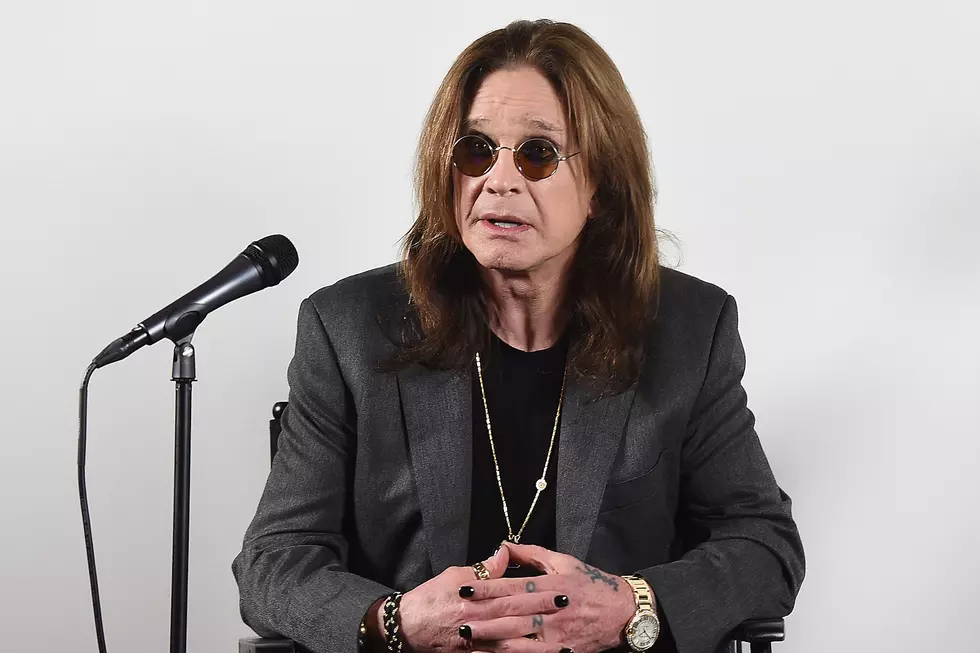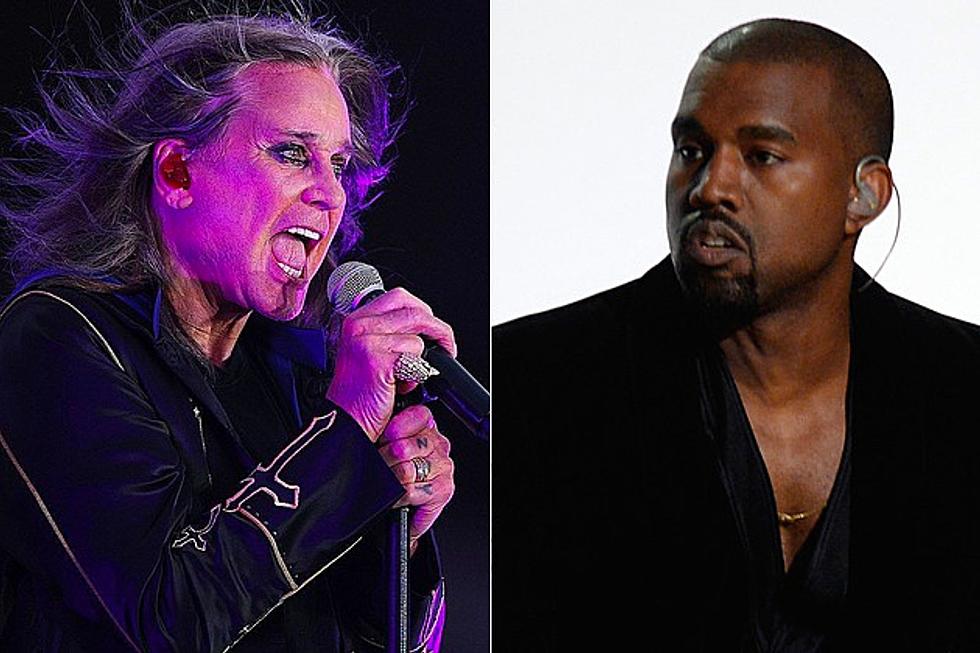
How Ozzy Osbourne’s ‘Blizzard of Ozz’ Became Such a Huge Rebound
With the release of Blizzard of Ozz, on Sept. 20, 1980, Ozzy Osbourne initiated one of the most improbable career comebacks in rock history, silencing scores of unbelievers who felt the former Black Sabbath singer could never make it on his own. Osbourne himself could be considered one of those doubters.
Indeed, so low was Osbourne’s self-esteem after being dismissed by Sabbath, in April 1979, that he would waste months wallowing in self-pity, sequestered in a seedy L.A. motel, while continuing to indulge in his numerous vices. In the end, it took an outcast of similar proportions — future manager and, later, wife, Sharon Arden — to come to Osbourne’s rescue, at a time when she was looking to break ranks with her father, legendary artist manager Don Arden (who, coincidentally was in charge of Black Sabbath’s ongoing career).
Ozzy and Sharon saw something in each other no one else did: hope. So they started searching for accomplices also willing to take a chance on the singer. Though the going was tough at first (the only label willing to offer a contract was Jet Records, owned by Sharon's dad), they eventually hit the jackpot in soon-to-be-former Quiet Riot guitar prodigy Randy Rhoads, who amazed Ozzy with his talent and songwriting abilities.
Rhoads flew to England in November 1979 to join Osbourne and Australian-born bassist Bob Daisley (ex-Rainbow, Widowmaker, Chicken Shack and Kahvas Jute) for rehearsals in the seclusion of the Welsh countryside, backed by a virtual cavalcade of stand-in drummers. But after nearly giving the gig to future Praying Mantis man Dave Potts, it was another veteran musician, longtime Uriah Heep drummer Lee Kerslake, who wound up completing the formation informally baptized as the "Blizzard of Ozz" (based on an old suggestion from Osbourne’s dad).
By this point, 1979 had turned into 1980, winter into spring, and Osbourne’s former bandmates in Black Sabbath had piled on the pressure by delivering a triumphant return to form in Heaven and Hell, their first studio album with Ronnie James Dio which bowled over fans and critics and quickly shot into the U.K. Top 10. All this while Osbourne was simultaneously hard at work in rural Ridge Farm Studios, hacking away at their as yet untitled debut.
Having dispensed with original producer Chris Tsangarides early (choosing to produce themselves with the help of engineer Max Norman), Osbourne, Rhoads, Daisley, Kerslake and session keyboardist Don Airey closed ranks around a stunning set of songs built around Rhoads’ uncanny mastery of classically-trained lead and rhythm guitar work, Daisley’s evocative lyrics, Kerslake’s song-arranging experience, and Osbourne’s inimitable voice and charisma.
Listen to Ozzy Osbourne Perform 'Crazy Train'
The results have since become staples of Osbourne’s concert performances — especially the explosive call-to-arms of “I Don’t Know,” the ready-made hit single that was “Crazy Train,” the cautionary tale of “Suicide Solution” (later to gain controversy when it was blamed for teen suicides) and the gothic fan favorite, “Mr. Crowley,” which benefited from a timeless cathedral synth intro from Airey. Nestled amidst these popular all-timers were the heartfelt ballad “Goodbye to Romance” (Osbourne’s sad adieu to Sabbath), a pair of relentless heavy rockers in “No Bone Movies” and “Steal Away (The Night)” and twin showcases of Rhoads’ versatile talents in the acoustic interlude “Dee” and neoclassical epic “Revelation (Mother Earth).”
Blizzard of Ozz — as the album was ultimately named so that Osbourne’s brand could be given top billing (to the chagrin of some of those involved) — gave Osbourne exactly the kind of impressive retort needed to silence his critics and counter Sabbath’s own confident rebirth behind Dio. Blizzard wouldn’t perform as strongly out of the gate for lack of promotional support and the fact it didn’t even gain a U.S. release until March 1981. But it would ultimately win the marathon, selling more than 5 million copies worldwide.
Ironically, just weeks after the album’s European release, yet still months away from its arrival in America, Osbourne’s band was already hard at work recording its follow-up, Diary of a Madman. What the rhythm section of Daisley and Kerslake never saw coming, after everything they’d contributed to Osbourne’s resurrection, was their impending and unceremonious replacement by Rudy Sarzo (Randy Rhoads' onetime Quiet Riot band mate) and Tommy Aldridge (ex-Black Oak Arkansas, Pat Travers, etc.), both of whom, adding insult to injury, were actually photographed for the new album’s sleeve.
This cold-blooded act of betrayal spelled the end of Blizzard of Ozz — the band — but of course Blizzard of Ozz — the album — would transcend such petty behavior and go down as a heavy metal classic. Its songs have remained the very backbone of Osbourne’s solo career, well beyond Rhoads’ death in 1982, his many six-string replacements, the unfortunate legal battles waged between the Osbourne organization and the album’s rhythm section, and of course Osbourne’s own celebrity adventures and misadventures over ensuing decades.
All of it thanks to the unlikely career turnaround propitiated by Blizzard of Ozz and the large and talented cast of characters who contributed to its creation and success.
Ozzy Osbourne's 10 Craziest TV Moments
Remembering Guitarist Randy Rhoads
More From Ultimate Classic Rock









